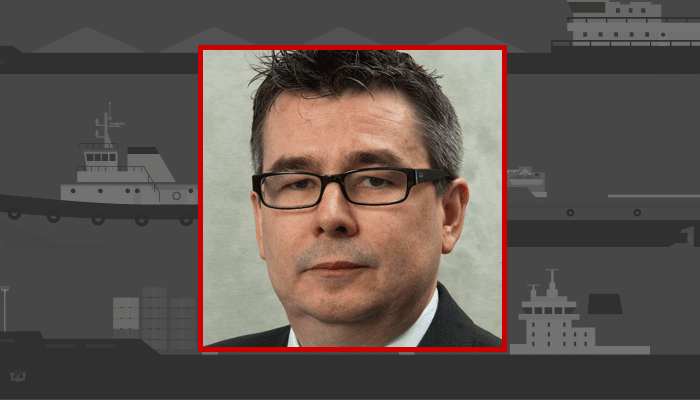by Robert Field, Technical Director, Cathelco
As the pace at which ballast water treatment (BWT) systems are being fitted quickens, owners and operators may be faced with some tough choices when it comes to deciding whether to install the equipment at drydock or with the vessel alongside.
If the BWT system can be fitted during routine drydocking then there are clear advantages in having all the facilities that the yard provides and the assurance that the work can be completed within a typical period of 10 days. If hull penetrations are required, this can be achieved relatively easily providing more options for getting the equipment to the required location on the ship.
The correct positioning of hull penetrations is vital to the efficiency of self-cleaning filters. In dry docking situations, there is the risk that the design of blackflush pipework can be compromised in order to expedite the installation process. In fact, the filter blackflush demands specific pressure characteristics and if these are altered by changing the pipework design or the position of the outlet point there is a possibility that the whole performance of the ballast water system will jeopardised.
However, if compliance dates are pressing and the next scheduled drydocking is months or even years away, then carrying out the work alongside may the only answer.
This immediately raises a number of questions. Will it be necessary to use divers or can the vessel be ballasted high enough to allow from hull penetrations?
Inevitably, a lot more preparation work will be involved in capping off existing ballast water lines. You will also be dealing with live electrical systems and all the safety factors that involves in comparison with a drydock situation where the power can be cut off.
In a drydock location there will generally be people with a full range of mechanical and electrical skills. However, if the work is being carried out alongside a greater degree of planning and management is required to ensure that that the right combination of skills are available.
If the work involves software integration, as in the majority of installations, an even higher level of planning and co-ordination are required to make sure that system is functioning properly.
As a last resort, the BWT equipment can be taken on board and then fitted by a riding crew. This is perhaps the least attractive of the options as it involves finding space to store various components on the vessel and providing berths for the installation team which generally consists of four or five people.
This is a dilemma that a growing number of owners are going to have to find a way through during the coming months and years when a total of more than 58,000 vessels will have to be fitted with BWT systems worldwide.
If there is lesson to be learned from this, it is that owners should start talking to BWT suppliers now in order to plan installations thoroughly, particularly taking into account factors such as software integration which may take longer than the installation of the actual BWT equipment.

About Cathelco: Cathelco approaching USCG Type Approval
The Cathelco Evolution BWT system is based on a combination of filtration and UV technology and will ensure compliance with the latest IMO and U.S.Coast Guard regulations.
All of the land-based and sea-based testing procedures have now been completed and the documentation will shortly be submitted to the IMO and USCG for Type Approval.
Cathelco, now part of the Finnish-based Evac Group, received IMO approval for their Mk1 system in 2014. The requirements of the revised G8 standard and the introduction of more stringent USCG regulations, led Cathelco to redesign their system to comply with the ‘live/dead’ standard.
The differentiating feature of the Evolution system is a ‘feedback loop’ which ensures that the UV dose is optimised according the seawater quality. Cathelco are the only company to provide a UVT sensor as standard. With systems obtained from other manufacturers it is necessary to purchase a UVT sensor as an extra.
The UVT sensor measures the light transmittance through a sample of seawater taken after the filter, but before it reaches the UV chambers. This is measured at the same wavelength (UVC 254 nm) as the biocidal light emitted by the UV lamps. From this data, the automation unit control unit calculates the correct UV dosage.
In this way, the output to the lamps is continuously optimised, ensuring the correct level of irradiation and economising on power through the use of stepless power control.
UV intensity meters mounted on the edge of the chambers measure the intensity of light received during irradiation. This relationship creates a feed-back loop in which the calculated dose is continuously compared with the actual dose. If the actual dose is within the prescribed range, ballast water treatment continues as normal. However, if the dose is less, then the automation system increases the power or initiates a lamp cleaning cycle.
The revised G8 Guidelines for IMO Type Approval and the U.S.Coast Guard Final Rule (Section162.060-38) on the treatment of ballast water state that the UV-T level must be recorded together with the dosage during each ballasting operation.

